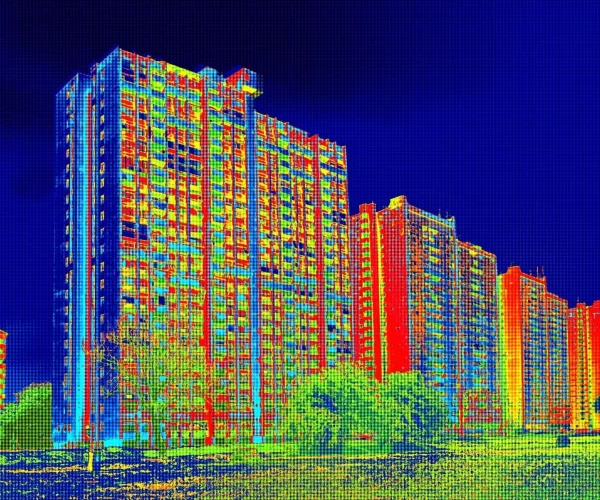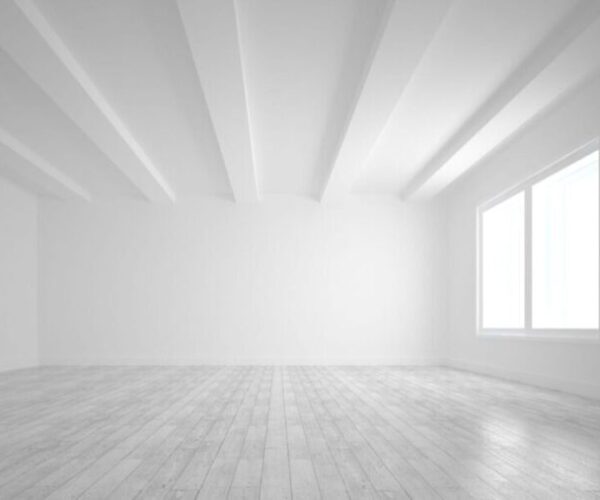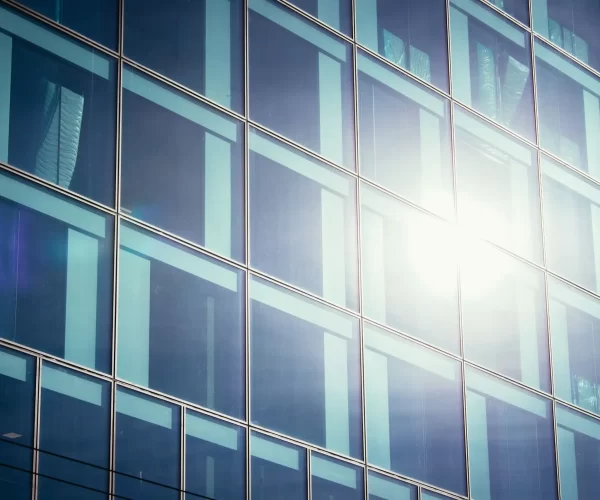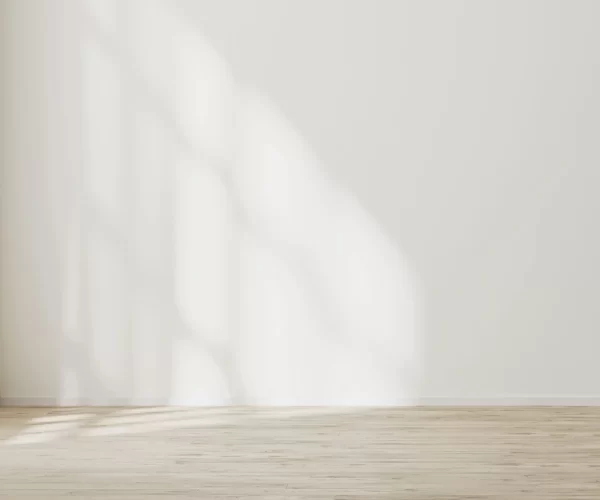Building Performance Simulation

Envelope and Facade Design Analysis
Facade design analysis is a process of evaluating the performance of the building envelope or facade. The facade is the exterior of the building that acts as the barrier between the interior environment and the external environment. Facade design analysis helps architects, engineers, and building owners to optimize the performance of the facade by identifying and addressing issues related to energy efficiency, thermal comfort, daylighting, and visual comfort. The analysis process typically involves computer simulations that use building energy modeling software, daylighting analysis software, and computational fluid dynamics (CFD) software. These simulations can help evaluate the performance of different facade design options, such as glazing types, shading devices, insulation levels, and ventilation strategies.
Daylight, Glare Radiance Simulation
Daylight and glare analysis is an important part of facade design analysis, which helps to optimize the performance of the building envelope with respect to natural lighting. Daylight analysis involves studying the amount and distribution of natural light that enters a building through its facade, while glare analysis assesses the potential for discomfort and visual impairment caused by excessive brightness and contrast. There are several methods for conducting daylight and glare analysis, ranging from simple hand calculations to complex computer simulations.

Artificial lighting Simulation
There are several benefits of simulating artificial light in various settings. Simulating artificial light can help to optimize lighting designs and reduce energy consumption by identifying areas where lighting levels can be reduced without compromising visual comfort. Proper lighting levels can improve productivity by reducing eye strain and fatigue, leading to a more comfortable and productive work environment. Simulating artificial light can help to identify potential safety hazards, such as poor visibility or glare, and help to design lighting that improves safety. Also, it can help to ensure that lighting levels are appropriate for the task and that the color temperature and color rendering are suitable for the environment, leading to better visual comfort and reduced eye strain. By optimizing lighting design and reducing energy consumption, simulating artificial light can help to save costs associated with lighting in both commercial and residential settings. Overall, simulating artificial light can help to optimize lighting design, improve visual comfort, reduce energy consumption, and enhance safety, leading to a better overall indoor environment.


Solar Gain Control and Penetration Studies
Solar gain control refers to the process of managing the amount of heat and light that enters a building from the sun. Solar gain can be a significant source of heat in buildings, particularly in hot climates, and can lead to increased energy consumption for cooling and lighting. Therefore, managing solar gain can help to reduce energy costs and improve indoor comfort. There are several ways to control solar gain in buildings, including:
1.Orientation and shading: Building orientation and shading can be used to reduce the amount of direct sunlight that enters a building. This can be achieved through the use of shading devices, such as overhangs, louvers, or shading screens.
2.Window design: Window design can play a significant role in controlling solar gain. High-performance windows with low solar heat gain coefficients (SHGC) can help to reduce the amount of heat that enters a building while still allowing natural light to enter.
3.Glazing: The use of glazing materials, such as low-e coatings, can help to reduce the amount of solar radiation that enters a building, while still allowing visible light to pass through.
4.Interior shading devices: Interior shading devices, such as blinds, curtains, or shades, can be used to block direct sunlight and reduce solar gain.
5.Building automation systems: Building automation systems can be used to control solar gain by automatically adjusting shades or blinds based on the position of the sun and the building’s orientation.
By managing solar gain, building owners and managers can reduce energy consumption, improve indoor comfort, and create a more sustainable and energy-efficient building.
Natural Ventilation and CFD Simulation
Natural ventilation is the process of using natural air flow to exchange indoor and outdoor air in a building, without the need for mechanical ventilation systems. Computational fluid dynamics (CFD) analysis is a useful tool for studying and analyzing the natural ventilation of a building. natural ventilation CFD analysis is an important tool for optimizing the design of a building, enhancing occupant comfort, and reducing energy consumption. By assessing the natural ventilation of a building, it is possible to identify areas of improvement and develop strategies to enhance indoor air.


Building Massing and Orientation Optimization
A building massing and orientation optimization study involves analyzing various design options to determine the best massing and orientation for a building based on factors such as energy efficiency, aesthetics, functionality, and environmental impact. The first step in the study would be to gather information about the site and its context, including its climate, topography, surrounding buildings, and available resources. This information would be used to determine the optimal orientation for the building based on factors such as solar exposure and wind patterns. Next, various massing options would be analyzed to determine the most efficient use of space while minimizing the amount of exterior wall area exposed to the outside environment. This would involve considering factors such as building shape, height, and depth, as well as the placement of windows and other openings. Once the optimal massing and orientation options have been identified, energy modeling software could be used to analyze the energy performance of each option, taking into account factors such as heating and cooling loads, lighting requirements, and the use of renewable energy sources.
The final step would be to evaluate the environmental impact of each design option, taking into account factors such as the number of resources required for construction, the building’s carbon footprint, and its long-term sustainability. Overall, a building massing and orientation optimization study can help architects and builders create more efficient, sustainable, and aesthetically pleasing buildings that meet the needs of their occupants and the environment.
Incident Solar Radiation Analysis
Incident solar radiation analysis is the process of measuring and analyzing the amount of solar radiation that falls on a specific area or surface. This type of analysis is often used in the design of solar energy systems and in building energy modeling to determine the energy performance of buildings.
The incident solar radiation on a surface can be affected by a number of factors, including the angle of the sun, the time of day, the season, and the latitude and longitude of the location. To conduct an incident solar radiation analysis, various tools and techniques can be used, including:
1.Solar Path Diagrams: Solar path diagrams can be used to visualize the sun’s path throughout the day and year. They show the position of the sun at different times of the day and indicate the angle at which solar radiation hits a surface.
2.Solar Radiation Models: Computer models can be used to calculate the amount of solar radiation that falls on a specific area or surface. These models take into account the location, orientation, and shading of the building, as well as the characteristics of the surrounding environment.
3.Pyranometers: Pyranometers are devices that measure the amount of solar radiation that falls on a surface. They are commonly used to measure the solar radiation on solar panels, but can also be used to measure incident solar radiation on buildings.
The results of an incident solar radiation analysis can be used to determine the potential energy output of a solar energy system, as well as to optimize the design and orientation of a building to maximize energy efficiency. It is an important tool for designers, engineers, and architects in creating sustainable buildings and renewable energy systems.


Useful Daylight Illuminance (UDI)
Useful Daylight Illuminance (UDI) is a metric used to evaluate the amount of daylight that enters a space and how effectively it illuminates the area. It is a measure of the percentage of time that the daylight levels within a space meet a certain threshold, typically expressed in lux.
The UDI metric takes into account the illuminance levels at different times of the day, as well as the orientation and shading of the building. It provides a more detailed and accurate assessment of the quality of daylighting within a space compared to other metrics that simply measure the amount of light.
The UDI metric is often used in building design and energy modeling to optimize the use of natural daylight and reduce the need for artificial lighting. It helps designers determine the optimal location and size of windows and other openings, as well as the shading and glazing systems needed to maximize daylighting while minimizing heat gain and glare.
The UDI metric is also useful in promoting human health and well-being. Exposure to natural daylight has been shown to improve mood, productivity, and overall health, making it an important consideration in building design. By using the UDI metric to optimize natural daylighting, designers can create healthier and more sustainable buildings.The final step would be to evaluate the environmental impact of each design option, taking into account factors such as the number of resources required for construction, the building’s carbon footprint, and its long-term sustainability. Overall, a building massing and orientation optimization study can help architects and builders create more efficient, sustainable, and aesthetically pleasing buildings that meet the needs of their occupants and the environment.
Spatial Daylight Autonomy (SDA)
Spatial Daylight Autonomy (sDA) is a metric used in building performance analysis to evaluate the availability and quality of daylight within a space. It is a measure of the percentage of the occupied hours of the year during which a space receives a certain level of daylight, typically expressed in lux. The sDA metric takes into account the location, orientation, and shading of the building, as well as the geometry of the space and the type of glazing used in windows and other openings. It provides a more detailed and accurate assessment of daylight availability compared to other metrics that simply measure the amount of light.
The sDA metric is often used in building design and energy modeling to optimize the use of natural daylight and reduce the need for artificial lighting. It helps designers determine the optimal size and location of windows and other openings, as well as the shading and glazing systems needed to maximize daylight while minimizing heat gain and glare. The sDA metric is also useful in promoting energy efficiency and sustainability. By optimizing natural daylighting, buildings can reduce the need for artificial lighting and HVAC systems, resulting in lower energy consumption and greenhouse gas emissions. The sDA metric is widely used in building performance standards such as LEED and WELL Building Standard, and is becoming an increasingly important consideration in building design and construction.


Annual Sunlight Exposure (ASE)
Annual Sunlight Exposure (ASE) is a metric used to evaluate the amount of direct sunlight that enters a space over the course of a year. It is a measure of the percentage of the floor area that receives direct sunlight for a certain period of time, typically expressed as a percentage. The ASE metric takes into account the location, orientation, and shading of the building, as well as the geometry of the space and the type of glazing used in windows and other openings. It provides a more detailed and accurate assessment of the amount of direct sunlight that enters a space compared to other metrics that simply measure the amount of light.
The ASE metric is often used in building design and energy modeling to optimize the use of natural daylight and reduce the need for artificial lighting and cooling. It helps designers determine the optimal size and location of windows and other openings, as well as the shading and glazing systems needed to maximize daylight while minimizing heat gain and glare. The ASE metric is also useful in promoting energy efficiency and sustainability. By optimizing natural daylighting and reducing heat gain, buildings can reduce the need for artificial lighting and HVAC systems, resulting in lower energy consumption and greenhouse gas emissions. The ASE metric is commonly used in building performance standards such as LEED and is becoming an increasingly important consideration in building design and construction.The final step would be to evaluate the environmental impact of each design option, taking into account factors such as the number of resources required for construction, the building’s carbon footprint, and its long-term sustainability. Overall, a building massing and orientation optimization study can help architects and builders create more efficient, sustainable, and aesthetically pleasing buildings that meet the needs of their occupants and the environment.</p>
We’re here to help and answer any question you might have.
Free Consultation About RDT Design Technologies LLP
Testimonial
"Our experience with RDT Corp has been outstanding. They delivered a customized solution that addressed all our requirements and exceeded our expectations. Their commitment to excellence is evident in everything they do."

"Working with RDT Corp has been a game-changer for our company. Their attention to detail and commitment to excellence have helped us achieve our environmental goals efficiently and effectively. I highly recommend their services to anyone looking for top-notch environmental impact studies."

"Our experience with RDT Corp has been outstanding. They delivered a customized solution that addressed all our requirements and exceeded our expectations. Their commitment to excellence is evident in everything they do."





















